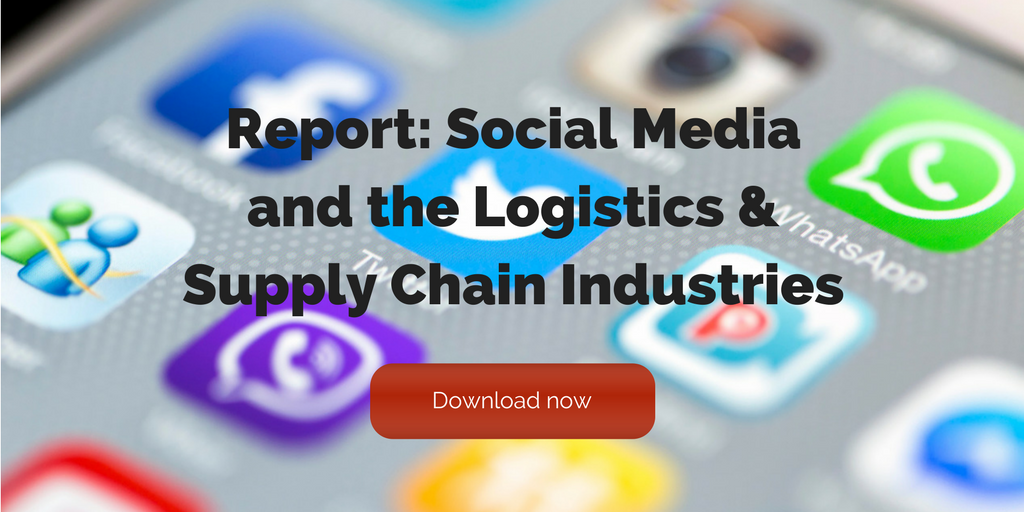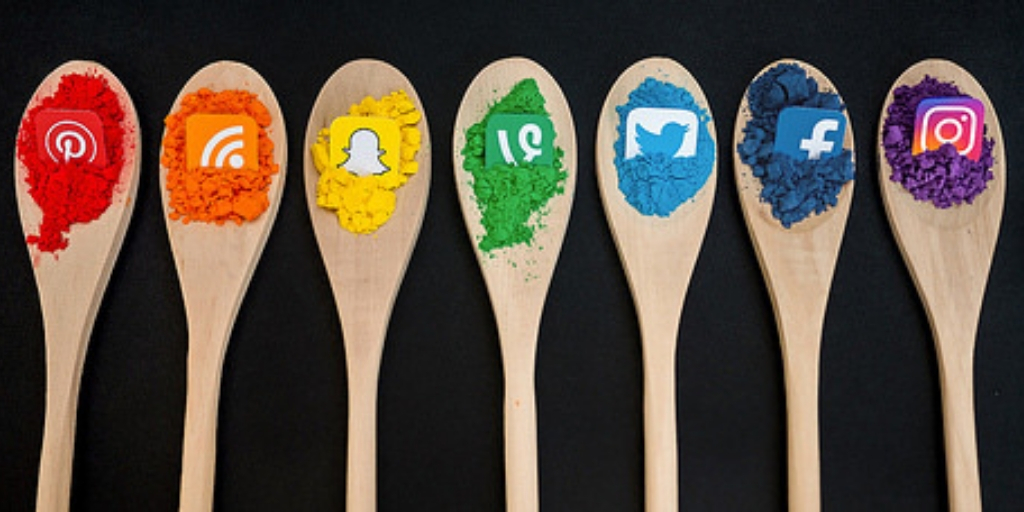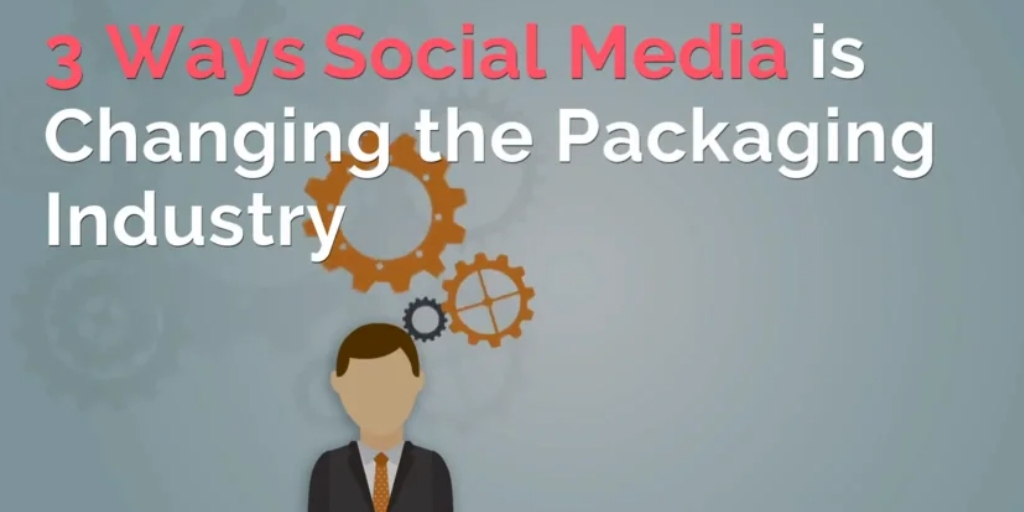
by Fronetics | Mar 13, 2019 | Blog, Marketing, Social Media
New reports show an overall decline in social media use. With dropping numbers, why should businesses continue to use social media use? Here’s seven reasons why your brand still needs social media.
Highlights:
- Social media usage has seen a steady decline in usage over the past two years.
- Having a presence on social media shows that your business is current, approachable, and interested in meeting their customers where they are. In fact, it is often more noticeable when a business does NOT have social media accounts than when they do.
- Success should be determined when a marketing strategy delivers against business goals, where social media is a part of the overall strategy. It is a classic case of the whole being greater than the sum of the parts.
Marketers have been speaking anecdotally about the decline of social media for a solid year, but now we have data to support our instincts. The Infinite Dial 2018 report, which explores consumer usage of media and technology, has found that for the first time ever, both Facebook and Twitter use declined in 2018, from 67% to 62% and 23% to 21%, respectively. Overall, social media usage has decreased from 80% in 2017 to 77% in 2018. To put that in perspective, social media usage has increased an average of 7.77% over the last 9 years. Experts predict that we will likely see continued decline in 2019.
So, given those statistics and predictions, why should businesses continue to use social media? In a saturated market with declining audience interest, what’s the point?
Here are seven reasons why social media is still worth your time and effort
1. It’s expected.
Much like consumers expect any company worth doing business with to have a well-thought out, updated, user-friendly website, they also expect to be able to find them on social media. Having a presence on social media shows that your business is current, approachable, and interested in meeting their customers where they are. In fact, it is often more noticeable when a business does NOT have social media accounts than when they do.
2. It’s a branding tool.
Social media allows consumers who otherwise wouldn’t know about your business to discover it and learn what it’s all about. Consistently publishing to social media results in your brand remaining top of mind when a potential buyer is looking for your product or services.
3. It’s a way to build authority.
Social media isn’t just a way to tell consumers about your brand; it’s a way to show your audience that you know what they care about, what resonates with them, and that you are a trusted source of information.
4. It boosts organic visibility.
The keywords used in social media and the backlinks acquired send signals to search engines that your content is relevant for a certain subject. According to Search Engine Journal, “Google has repeatedly said that social media likes, favorites, shares, backlinks, etc. are not direct ranking signals — but there is a correlation between social media activity/popularity and how/why it is ranked by search engines.”
5. It allows for easy communication.
Whether it’s to network with industry professionals, provide customer service, or influence potential customers, social media provides a free, easily accessible way to do so. And more and more customers are expecting to be able to communicate via social media with brands.
6. It builds your brand’s reputation.
All of the above reasons factor into your brand’s reputation. By delivering resources and information to customers and potential customers, providing great customer service, increasing your visibility, and being authentic and transparent, your brand is building up an online reputation that can impact your company’s future.
7. It provides an avenue for thought leadership and acts as a distribution channel.
You’ve invested plenty of time and resources creating thought-provoking content on your website, but if you don’t share that through social media channels, how many people will find it? Social media provides an avenue for your content to be distributed and, better yet, shared with networks that you wouldn’t have had access to otherwise.
The question remains, how do we measure social media success? What does success look like?
Unfortunately, many brands fall into the trap of trying to associate an increase in sales with their social media efforts. However, more and more, marketers are realizing that this is a flawed view of what social media is all about.
We have stated before that social media should be measured in terms of potential, rather than dollar amount. A recent article on CMS Wireinterviews several professionals who agree: “Alban, the founder of Your Virtual Assistant Service, said the focus of social media should not be on ROI but on growing your following to increase brand awareness, engaging with your customers to create raving fans, and educating your potential customers about the benefits of your product.” The article continues, “Social media may or may not lead to an increase in sales, but it will give you the opportunity to build relationships with your audience and deliver ‘amazing’ customer service.”
Likewise, Ben Ricciardi, CEO of the full service agency Times10, explains , “’There is no easy way to financially quantify what each social media interaction is worth. It’s much more effective to take all the marketing channels you’re budgeting for and compare it against the general lift or decline you see in sales.”
[bctt tweet=”Success, therefore, should be determined when a marketing strategy delivers against business goals, where social media is a part of the overall strategy. ” username=”Fronetics”]
Success, therefore, should be determined when a marketing strategy delivers against business goals, where social media is a part of the overall strategy. It is a classic case of the whole being greater than the sum of the parts. Vanity metrics — such as likes, follows, reach and engagement — are still important to help measure brand awareness and brand loyalty. However, given the overall decline in social media usage, these metrics must be taken with a grain of salt.
Social media is an important component of a complete marketing strategy. Despite recent declines in its use, there are still an estimated 2.77 billion people on social media worldwide. Nowhere else can you as quickly, easily, and cheaply have access to your audience. And most importantly, your audience expects you to be there.
Related posts:


by Fronetics | Mar 8, 2019 | Blog, Marketing, Social Media
Take note: Brands in the supply chain are not immune to these social media mistakes.
Highlights:
- There will be over 3 billion social media users by 2021.
- Not knowing your audience can cripple your efforts.
- Social media is about connecting – not promoting.
Approximately 81% of small and medium businesses use a social platform. And we all understand why. By 2021, it is estimated that there will be around 3.02 billion social media users around the globe. That’s a lot of potential customers.
It’s easy to see why companies are jumping on the social media bandwagon. And there’s no disputing that social mediais an effective way to increase brand awareness and generate leads. But it can be virtually useless if your company isn’t doing it right.
Are you making any social media mistakes? Check out our list of the biggest blunders we see companies making to find out.
4 social media mistakes supply chain brands are still making

(Made with Canva)
Mistake #1: Not knowing the audience
You’d be surprised how often we find that brands don’t have a clear idea of their audience on social media. This covers everything from knowing when followers are active to what content hits home with them to other interests followers might have. You need to know who you’re talking to before you start creating and sharing content on social media.
So how do you figure out your audience? First, it’s important to create a detailed description of your target buyer persona – including location, education level, role in the industry, needs and concerns, and anything else that’s relevant. Next — and we can’t say it enough — engage with your audience! Participate in discussions, encourage comments, and pay attention to what your followers are telling you.
Mistake #2: Using objectives instead of strategy
Social media platforms are continually making changes and updates to improve the user experience. In order to weather these changes and keep your audience engaged, it’s imperative to have a clear strategy that includes types of content, frequency, and pillar topics. Posts should reflect your brand, so make sure posts follow style guidelines and reflect your specific tone.
A strategy will also help achieve ROI. Social Media Examiner’s 2018 Social Media Marketing Industry Report found that only 44% of marketers agree that they know how to measure social media ROI. That means two-thirds of marketers don’t know whether or how much their marketing efforts are paying off when it comes to the use of social media. A strategy that incorporates defined goals, tracking, and measuring will help prove ROI and improve your social media presence.
Mistake #3: Using the most popular social media platforms
Not all social media platforms are created equal. In fact, all social media channels have a differentiating quality that makes them appealing to specific audiences.
Start by identifying where your target audience is spending their time. For example, 81% of millennials view their Twitter account on a daily basis. If your company is looking to capture millennials as leads, your social media efforts should certainly include Twitter.
Once you’ve determined where you should be posting, concentrate on creating content that caters to those specific platforms. Lots of companies post the same content across all of the apps they use. We understand how easy that is for marketers, especially with automation tools. But the foundation of social engagement is authenticity, something that is hard to achieve when posts are the same across all channels. Work to create content — including video and images — that caters to specific platforms to build brand awareness and loyalty.
Mistake #4: Promoting instead of connecting
This one may be the cardinal sin of social media. These platforms are all about engagement. Users don’t want to engage with brands that are pushing their products and services. Users want informative, interesting, and, yes, even fun content. Companies need to focus on creating content that leaves their users wanting more.
[bctt tweet=”Users don’t want to engage with brands that are pushing their products and services. Users want informative, interesting, and, yes, even fun content. ” username=”Fronetics”]
Companies that are succeeding on social media are finding innovative and creative ways to relate to users. When you engage and get users involved in your story, you create long-lasting customer relationships. Storytelling creates an emotional bond with your company and drives brand loyalty.
Greg Hadden, executive creative director of Motive Made Studios, sums up the power of connecting with users: “What often gets lost is the fact that good storytelling is potent stuff. It has the power to make people want to believe and to belong, which is the goal of all storytellers. We’re all selling something, be it an idea, an exploration of the human condition, or say, a vacuum cleaner. It’s no mistake perhaps that good stories often create products.”
What social media mistakes do you try and avoid?
Related posts:


by Fronetics | Mar 6, 2019 | Blog, Marketing, Supply Chain
Here are our picks for the best podcasts for the supply chain for industry insights, analysis, and conversation.
Highlights
- Professional content is now available via podcasts
- Listen to conversation on transportation, SCM, manufacturing, automation, and more
- Get timely information from knowledgable people in the industry
Back in the day, fighting traffic on the morning commute was generally accompanied by the radio. But these days, podcasts are taking over, as more and more people are catching on to the benefits of being able to choose exactly what content they want to hear and listening to it at their convenience.
[bctt tweet=”You’re probably already aware of smash hit podcasts like Serial or This American Life, but we’re giving you the scoop on the podcasts you should be listening to that pertain to the supply chain and logistics industry.” username=”Fronetics”]
You’re probably already aware of smash hit podcasts like Serial or This American Life, but we’re giving you the scoop on the podcasts you should be listening to that pertain to the supply chain and logistics industry. Why not feed your mind and get the inside track on industry happenings on your commute?
Here are 5 of our favorite podcasts for the supply chain and logistics industries this year.
5 podcasts for the supply chain
1) Supply Chain and Logistics Management
The official podcast from the Cranfield Centre for Logistics and Supply Chain Management brings knowledge and experience from 50 years of educating business leaders at Cranfield University. The podcast is free on iTunes, and covers topics such as logistics and transportation management, with great episodes on topics like “Supply Chain Resilience,” “Operating Supply Chains in China,” and a fantastic guide to the basics, “What is Logistics and Supply Chain Management?”
2) Talking Logistics with Adrian Gonzalez
Supply chain and logistics analyst Adrian Gonzalez’s conversational podcast is a perennial favorite. Talking Logistics is formatted as an online video talk show and blog, featuring interviews with industry thought leaders and newsmakers. The show has a friendly feel and is easy to follow. It features guests including supply chain and logistics executives from leading manufacturing and retail companies, professors from respected academic institutions, executives from third-party logistics and technology companies, and authors.
3) SupplyChainBrain
The SupplyChainBrain podcast features in-depth conversations with industry practitioners, academics, consultants, and other experts from every imaginable aspect of supply chain management and international trade. The podcast has updated weekly since its launch in 2013, an impressive feat, and features great episodes on robotics, including “The Future of Robotics in Logistics” and “Dancing with Robots on the Factory Floor.”
4) Marketing Over Coffee
While it doesn’t carry a specific supply chain focus, Marketing Over Coffee is a place to stay up to date with all things digital marketing — which is important for supply chain professionals sector-wide. Hosted by John J. Wall and Christopher S. Penn and recorded in a local coffee shop, each episode is an easily approachable 20 minutes long. It’s casual, conversational, and full of tips on social marketing, SEO, search marketing, copywriting, and affiliate marketing.
5) Robohub Podcast
Robohub is a non-profit online communication platform that brings together experts in robotics, research, start-ups, business, and education from across the globe. Robohub’s podcast is a comprehensive and engaging source for various perspectives in the robotics industry. It’s great listening for timely information presented thoughtfully by knowledgeable people in the industry.
Related posts:


by Fronetics | Feb 27, 2019 | Blog, Marketing, SEO, Website Development
SEO helps your website rank higher in search engine results pages. Here are the SEO basics to get your website performing better and in front of your target audience.
Highlights:
- SEO stands for search engine optimization — that much has stayed the same. It refers to techniques that help your website rank higher in search engine results pages.
- SEO works by optimizing a website’s pages, conducting keyword research, and earning inbound links.
- To rank well in the long term, build your SEO marketing strategy around topics, not keywords.
Video transcript:
I’m Jennifer Yim and I’m the Director of Strategy here at Fronetics. Today’s topic is SEO. SEO seems pretty straightforward. You pick a few keywords and your page is magically optimized for SEO, right? Not quite.
People understand the basic principles of SEO, but a lot has changed in the last decade. Let’s take a look at the basics to get your site ranking higher.
SEO stands for search engine optimization — that much has stayed the same. It refers to techniques that help your website rank higher in search engine results pages. This makes your website more visible to people who are looking for solutions that your brand, product, or service can provide by search engines like Google, Yahoo!, and Bing.
What hasn’t stayed the same are the techniques we use to improve our rankings. This has everything to do with the search algorithms that these companies constantly change.
SEO works by optimizing a website’s pages, conducting keyword research, and earning inbound links. You can generally see results of SEO efforts once the webpage has been crawled and indexed by a search engine.
There are a ton of ways to improve the SEO of your site pages. Search engines look for elements including title tags, keywords, image tags, internal link structure, and inbound links.
Search engines also look at site structure and design, visitor behavior, and other external, off-site factors to determine how highly ranked your site should be in their results pages.
To rank well in the long term, build your SEO marketing strategy around topics, not keywords. If you do that, you’ll find you can naturally optimize for important keywords, anyway. Understanding your target audience and what interests them is key to attracting relevant visitors to your website through search engines.
For more tips on improving SEO and building your digital marketing strategy, visit us at Fronetics.com.
Related posts:


by Fronetics | Feb 21, 2019 | Marketing, Packaging, Social Media, Supply Chain
Social media is changing just about everything about the way brands market themselves — including packaging design.
Highlights:
- Packaging is a valuable content channel.
- Brands need to make packaging design decisions with an eye to how they read in thumbnail images.
- Use scalable imagery and optimize form function, color pallet, and font for user-generated social media content.
Social media has had an impact on just about everything in our lives, and the packaging industry is no exception. Have you ever considered that packaging is a form of content? In fact, the packaging design of goods is yet another opportunity for the delivery of branded content that engages buyers with brands.
[bctt tweet=”The packaging design of goods is yet another opportunity for the delivery of branded content that engages buyers with brands.” username=”Fronetics”]
Furthermore, in this environment where the lines between the digital and material worlds are increasingly blurred, savvy marketers are making sure that packaging aligns with online branded content, creating a cohesive consumer experience. As Mark Hewitt of SGK puts it, “By using the pack as media, brands can create a long-term content journey that builds over time.”
These days, social media is one of the biggest influencers in brands’ packaging design, as marketers continue to harness the power of instantly identifiable packaging.
Three ways social media is shaping the packaging industry
The beauty industry is just one example of where social media is revolutionizing the way marketers are conceiving of packaging design. This is an industry where aesthetic appeal has long been a big part of how beauty products were packaged, but brands have shifted their perspective in light of social media’s impact.
Says beauty branding and product design consultant Rinat Aruh, “We used to use the lens of: How do we design to create an impact on shelves? But now, we design for the thumbnail, which really changes some of the choices we make.”
So how are brands adapting their packaging? Paul Nowak, senior director of sales strategy and business development at QuadPackaging, has identified these three key factors.
1) Scalable imagery
We live in a mobile world. Images on social media are overwhelmingly viewed on mobile devices, and it’s crucial for designers to take this into account when making packaging decisions. Designs need to grab attention from the thumbnail, as Aruh alluded to. “This means that before designers finalize the packaging form and the brand design of the creative components, they need to add a step that tests the image on social media platforms and views them on a smartphone, not a desktop,” says Nowak.
2) Form function
Packaging designers have traditionally taken into account form in making design decision. At every phase of the supply chain, it needs to safeguard the product and express the brand and function. But when you put social media into the equation, form decisions take on a new dimension, as many consumer products are exclusively recognizable in social media posts by their packaging.
Nowak uses the example of consumer products like hand lotion. The decision to package the product in “a small tube, a large pump, or an elegant jar all convey different aspects of the brand experience and function of the packaging.”
3) Color pallet and font
As with form function, color and font decisions have always been key factors for packaging design. But these days, decisions about these design elements aren’t about what catches the eye on a shelf or even on a brand website.
Brands need to make decisions about color and font with an eye toward how they play on social media. This often means a simpler approach, making packaging clean and easily identifiable, even from a thumbnail. “Forward-thinking designers will add a social media test in their design phase to assure brand recognition in all media channels,” says Nowak.
What does the future hold?
If we know one thing about social media and how it impacts the marketing landscape, it’s that change is going to be pretty much constant. Brands need to continue approaching packaging as a valuable media channel and an opportunity to engage with consumers.
In addition to optimizing packaging for the user-generated content on social media, we’re seeing a rise of “connected” packaging. From Snap and Facebook codes, savvy marketers are recognizing the power of packaging design as nexus of the digital and material worlds.
Related posts:








